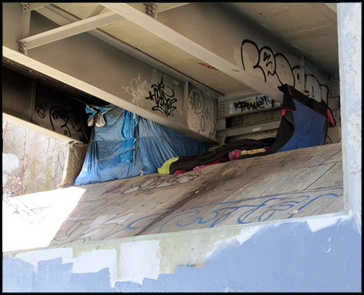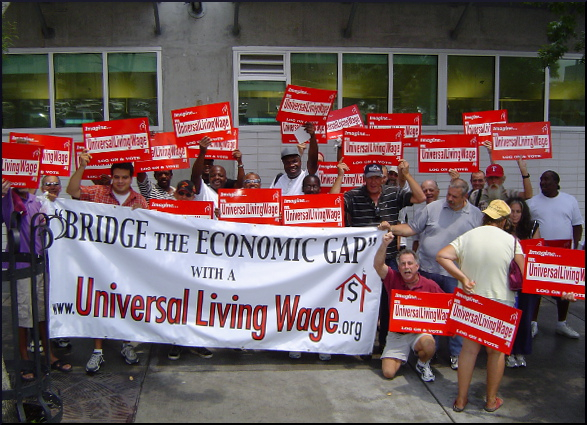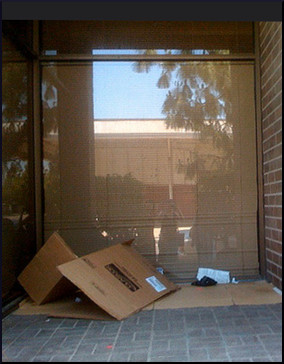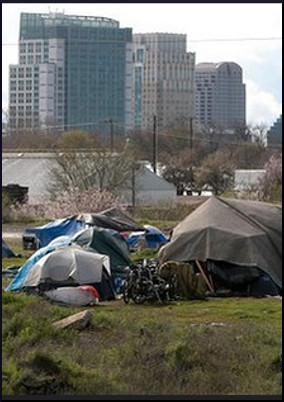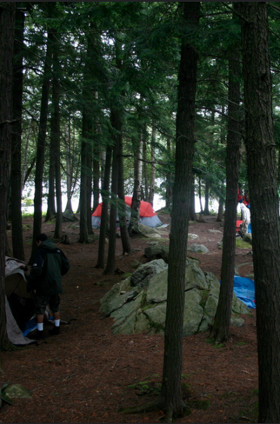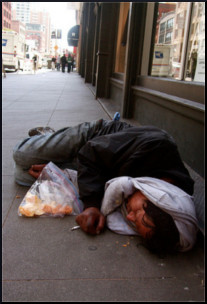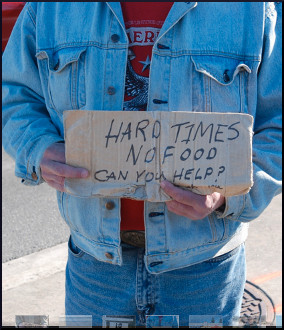
Two years ago, the print publication High Country News published a significant story by Scott Bransford that spotlighted two California cities, Fresno and Ontario, and one Oregon city, Portland. This has been about the tent cities in each of those metropolitan areas, which Bransford described, and more recent events.
Bransford had more to say on the subject of housing:
Makeshift dwellings may not be the dream homes of yesteryear, but they are simple, affordable, and sustainable in their use of salvaged materials. With imaginative designers, they could help solve the present housing crisis, a faster alternative to the process of building shelters and low-income apartment complexes.
He mentioned Dignity Village in Portland, Oregon, as an example, describing it as…
… a community that can house up to 60 people. Founded in 2000 and now approved by the city, it’s considered a model by housing advocates worldwide.
One local resident described it as not a flophouse, but…
… a community place. You support the village by taking care of yourself as if you were on your own.
Bransford described the environment:
Beyond the check-in desk in the village’s security post, residents find a balance between the human needs for safety and personal freedom. Most are required to do at least 10 hours of community service a week—helping build or remodel homes, for example — but otherwise they set their own schedules.
This summer, about four months ago, Beth Slovic wrote for The Oregonian that Portland’s city council would extend the life of Dignity Village for one year. But the 10-year-old camp needs to clean up its act, according to officials.
The perceived problems were highlighted in a report, back in February of 2010, by a private consultant who investigated every aspect of the squatter village, including its “financial instability.” What was the first clue to the shaky economic basis of this community? It’s a settlement made of wooden huts that recently has replaced tents! Portland paid somebody for the momentous news that the place is financially unstable.
Here is a fascinating quotation, followed by some questions it raises:
Among other problems, [the investigation] found that the nonprofit camp’s method of electing residents to only one-year terms on a governing board slows fundraising and site improvements. The report, commissioned by the city, also noted the absence of programs to help residents move to permanent housing.
Number one: There is a subtle psychological nuance to consider. In a transitional housing camp, for anyone to seek office with a term of more than one year is to admit that they have accepted homelessness as a lifestyle, or, as some might say, become a professional homeless person. It seems as if the most mentally healthy position a tent city resident could take would be the determination to have a new address by this time next year.
Psychology aside, maybe the Dignity Village folks are onto something that the state’s political insiders don’t want to admit the truth of. Maybe no one should hold a position of power for more than a year. All the real work is done by underlings, anyway.
The present political system doesn’t seem to be working out very well. Maybe the answer is a term limit of one year across the board. Maybe everything would work much better, if no official could stick around long enough to develop a crony network and an entrenched system of corruption. Might be worth trying.
Number two: “… [T]he absence of programs to help residents move to permanent housing.” And this is whose fault? The residents’?
The Dignity Village neighborhood is charmingly described by Slovic as…
… the city-owned Sunderland Yard, next to a leaf composting facility between a state prison and Portland International Airport.
An unnamed male urban planner and designer posted some photos of Dignity Village less than two months ago at the website Tent City Urbanism. Currently, the website of Dignity Village itself is between hosts, and its page contains only an optimistic description of future plans.
Reactions?
Source: “Tarp Nation: Squatter Villages and Tent Cities in the Economic Crisis,” Utne Reader, 2009
Source: “Portland’s Dignity Village homeless camp set to get another year, at least, on city land,” OregonLive.com, 06/07/11
Source: “A View of Dignity Village,” Tent City Urbanism, 08/15/11
Image by born1945, used under its Creative Commons license.

